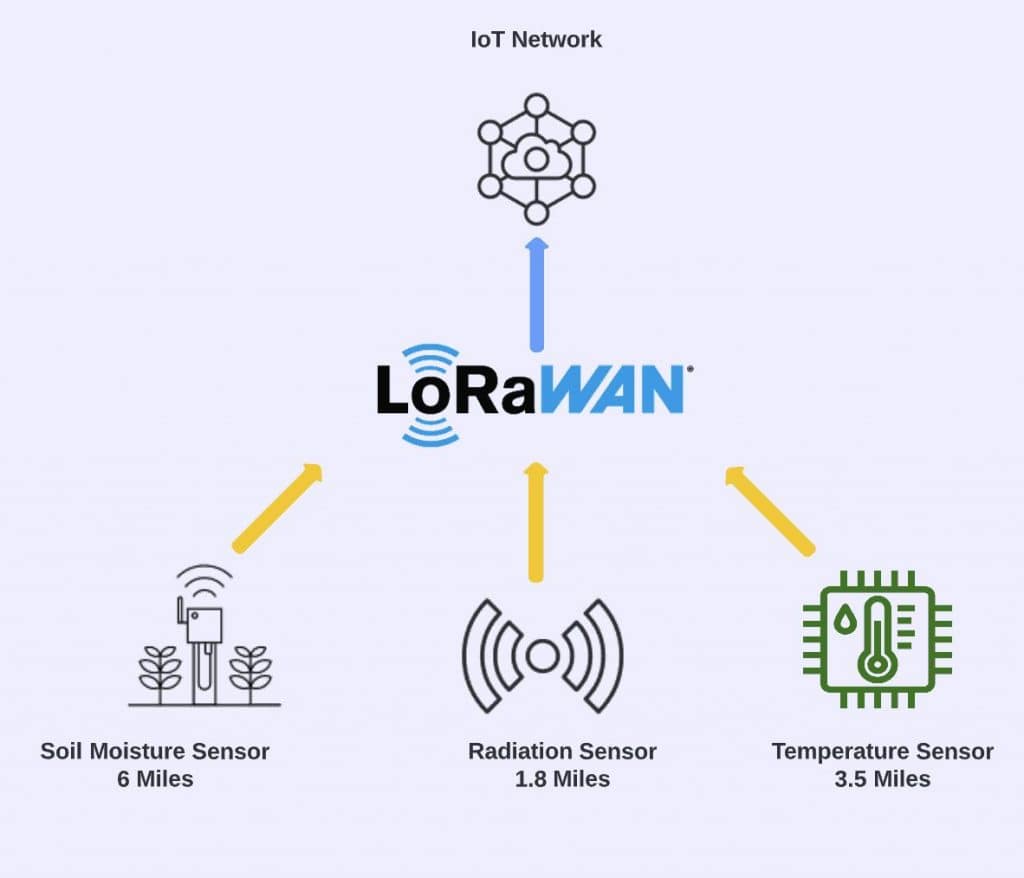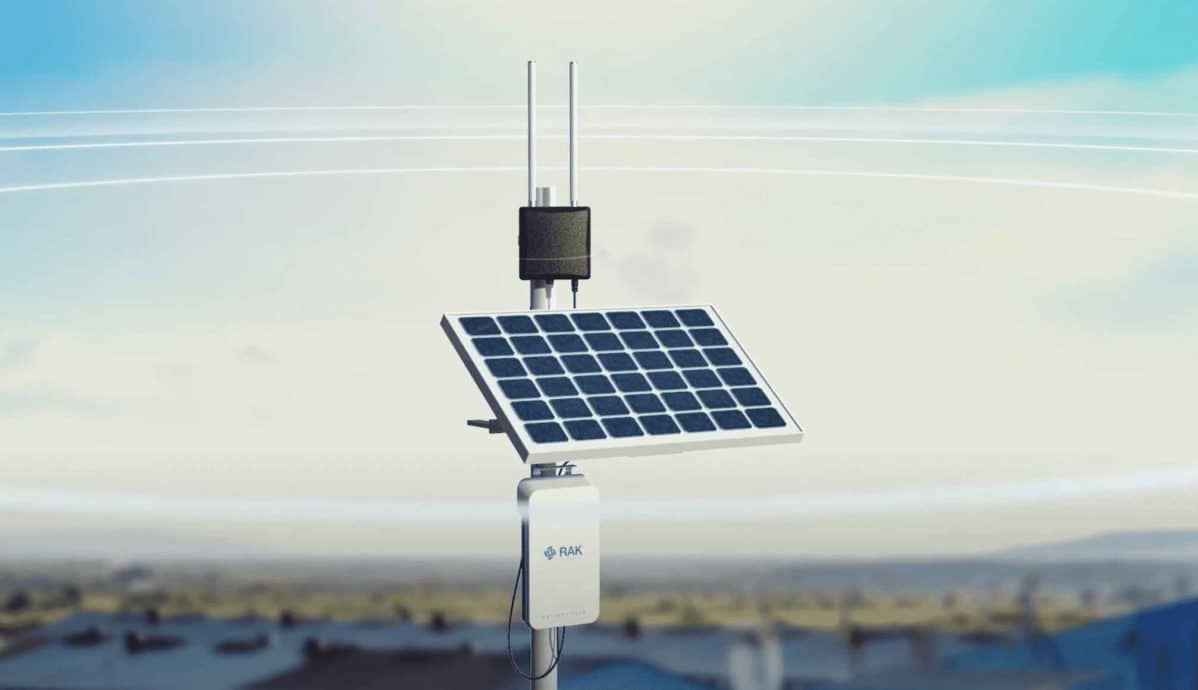Introduction
When we speak of wireless technology, you might be thinking of Bluetooth or Wi-Fi, but what if there was a protocol with far-reaching applications and a more remote connection?
“Internet of things”, a buzzword that has gained traction as products that have worked for hundreds of years can be replaced with something better. What if a thing suddenly had kilometers of wireless range and years of battery life at the same time? That would be the end of mockery, wouldn’t it?
Well, the hardware of today’s discussion certainly wants to make that possible, and that is the LoRaWAN protocol. This thing might look like your ordinary Wi-Fi access point, and it actually has one built-in.
But most prominently, it’s a Low Power Wide Area Network Gate. On the surface, it’s a relatively new wireless technology designed for low-bit-rate but long-range and low-power applications.
It’s a big deal with a promising future because it’s supported by an alliance of some of the most influential companies in the industry. Having said that, let’s take a look at the LoRa network in detail so, in the end, you can decide whether it’s worth the investment or not!
Table of contents
- Introduction
- What is LoRa and LoRaWAN?
- Is It Any Different from LoRaWAN?
- Then What is a LoRaWAN Gateway?
- Working On LoRaWAN Gateways for Non-Tech
- LoRaWAN IoT Solution – How Do They Operate Together?
- How to connect your LoRaWAN devices to LNS (LoRaWAN Network Server)?
- Where Do You Need the LoRaWAN Gateway?
- Should You Access LoRaWAN Technology?
- Final Thoughts On LoRaWAN
- References
Also Read: What is the Internet of Things (IoT)?
What is LoRa and LoRaWAN?
Before we get into the nitty-gritty of the LoRaWAN network, it’s worth understanding what the LoRa protocol is. So, LoRa stands for Long Range, a radio modulation technique used to create long-range communication links. The technology was first developed by SEM tech and, until now, has gained quite a lot of traction.
What makes LoRa interesting is its very low energy consumption and its broad coverage range (800m approx.). This is ideal for anyone looking for low-data bandwidth solutions in a long-lasting battery operation.
When you wonder about the function or purpose of LoRa, it is necessary to understand that it is an essential gateway or linking bridge. It enables you to connect or link your IoT devices and sensors wirelessly with your various enterprises.
In other words, it is the linking connection between the Internet of Things (IoT) hardware and software to the cloud. This connection makes the devices functional for your work.
Also Read: Is robotics computer science or engineering?
Is It Any Different from LoRaWAN?
As far as LoRaWAN goes, this is the network protocol that uses the LoRa technology, as I explained previously. LoRaWAN has the job of defining how the devices utilize LoRa. It regulates the message format or the change of messages between the network participants.
These participants are your end devices that are wirelessly connected to the network and can generate, receive or send information to other devices. You can use them as sensors to collect data from the environment. These gadgets are great sensors, whether it’s air quality, temperature, or any other magnitude.
While as actuators, they can take communication signals and convert them into mechanical actions such as movement, sound, and many more. They can also perform more complex functions as trackers (locating assets) or as bridges (converting non-wireless instruments).
Then What is a LoRaWAN Gateway?
With this knowledge, we are now ready to understand the concept of LoRaWAN gateways. So, these are the network’s base station that allows bi-directional networking between nodes (devices). It means the gateway is a source that forwards the data to LoRaWAN servers so it can be further processed and functional.
In simple words, if you are creating a project that uses LoRaWAN communication, you want to monitor the data remotely. For that, you will need a LoRaWAN gateway that forwards the data to a network and an application server.
The gateway will move this information to any third-party platform with a dashboard so you can visualize your data straight from your home!

Working On LoRaWAN Gateways for Non-Tech
Ideally, for the LoRa protocol to work, it needs to access the following components;
- Gateways
The gateway is the basic component that receives all the LoRa packets from the sensors.
- Network server
It forwards all your data packets to the network server, which brings about communication.
- Application server
Its main job is data encryption before it can be accessed by your dashboard (AWS, HTTP, etc.).
- Join server
Handles Over the Air Commissioning process (OTA) as well as generates the security keys.
- Lora Nodes
Finally, we have LoRa nodes that have built-in radio modulation capability. These either work on sensors or have different microcontrollers to generate the input.
LoRaWAN IoT Solution – How Do They Operate Together?
As you can see, the signal is generated from nodes that are interconnected with several gateways. They pass down the data to a single LoRaWAN network which is then processed onto different application servers and then to your dashboard. When it comes to a basic LoRaWAN, the nodes are linked directly to the gateways, so there isn’t any intercommunication between them.
On top of that, since the overall connection is bi-directional, you can use the nodes to perform a variety of actions. These can be anything from turning off the LED lights or rotating the sensors.
The best thing about LoRa is that even when the nodes transfer multiple data to the network servers, it will remove the duplicates before they are eventually received at the application server. This attribute is what gives LoRaWAN its added accuracy.
How to connect your LoRaWAN devices to LNS (LoRaWAN Network Server)?
You have a clear insight into LoRa and LoRaWAN gateways at this stage. It is time to build your LoRaWAN gateway by connecting the devices to LNS. We have put together the process step-wise to ease your understanding.
Step 1: Access The Essential Components
The foremost step is to have your requisites of a LoRaWAN gateway in place. It includes the right antenna, interface, and other hardware.
Step 2: Assemble The Hardware Components
The next step is to assemble the LoRaWAN IoT gateway and the hardware components. You can refer to the hardware box for the instructions for assembling and putting together the components correctly. The process is straightforward.
First, put and stick the boards over the mounting plate via drill holes or double-sided tape. Then, put the pigtail and connect the antenna to it.
Step 3: Software Installation And Configuration
The software installation step is the practical phase of connecting the LoRaWAN gateway to LNS. First, download the operating system for the gateway on a drive. Then, install it on your gateway following the installation instructions.
After the application installation, you will need to run SSH commands to make your gateway work. You will need other software for windows, while iOS and Linus have terminals for this purpose.
Step 4: Gateway Registration In TTN
You must create an account in The Things Network (TTN) to analyze the LoRaWAN gateway status. Once you link the account, you can use the TTNmapper application to experiment with the gateway and update its status.
Step 5: Create An Outdoor Gateway
The primary objective of a LoRaWAN gateway is to make it outdoor. For this purpose, you will use a special cable to connect the antenna to the gateway. It will link the LoRaWAN gateway to the LNS and make it work.
Where Do You Need the LoRaWAN Gateway?
The Internet of Things (IoT) is the primary tech innovation, and almost everyone relies on it. Since there are other technologies contributing to advancing the IoT, LoRa devices and applications like LoRaWAN gateways have global adoption.
We need LoRaWAN gateways in many areas of IoT, including motion sensors, ventilation monitoring, transport, smart agriculture, and many more. As LoRa is a non-cellular Low Power Wide Area (LPWA) network technology, it has uplifted the connectivity game to its peak.
Here are a few advantages of LoRaWAN gateways in the IoT.
- LoRaWAN gateway is a low-powered sensor with longer coverage. It usually covers up to 15 Kilometer area with free frequencies. The frequency that the LoRaWAN gateway uses does not need a license or upfront fees.
- LoRaWAN gateways have low power, meaning they have longer battery life for devices. Despite the low power, a single gateway can cover a large number of end devices (nodes).
- LoRaWAN gateway facilitates the IoT applications, such as smart building management, asset tracking, smart irrigation or agriculture, smart parking, etc. It connects the technology and the resources to provide humans with the facilities to perform the process effortlessly and securely.
- Helium Mining is an innovative decentralized wireless network growing significantly at the current time. Since Helium employs low-power smart devices or the Internet of Things to transfer data from the internet, the LoRaWAN gateway can be the cherry on top of its success.
Should You Access LoRaWAN Technology?
Since LoRa and LoRaWAN technology has a plethora of advantages, it is advisable to access them. You can make your connections broader and widen without compromising your security. The communication range of LoRaWAN is incredible, with low bandwidths, making it the leading network among the competition.
Moreover, the LoRaWAN gateway is a way to have longer connectivity using low power. It helps in the long-lasting of their devices with a battery life of about a decade.
In addition, the deep indoor penetration due to frequency (sub-gigahertz) allows robust indoor coverage and connection. It helps in managing smart parking, building management, etc.
On top of that, as LoRaWAN is smart IoT technology, it has commercial uses in many sectors. It includes ship monitoring, temperature moderation, weather prediction, smart agriculture, etc.
Also Read: Samsung Bot Chef
Final Thoughts On LoRaWAN
Wireless technology has changed the way of connectivity and internet usage. Today, we have access to the internet facilely, thanks to Low Power Wide Area (LPWA) network connectivity.
Long Range or LoRa has an application LoRaWAN gateway that enables the connection coverage of a larger area with a solid and robust indoor penetration. You can access many devices and sensors via the LoRaWAN gateway and process the input data in a bidirectional pathway.
Today, we have many uses of LoRaWAN, including commercial uses like smart irrigation, helium mining, smart parking, and many more. Hence, upgrading your connection to the next level is a worthy investment.
References
Marine. “IoT Gateway Hardware Development For IoT Developers.” Dusuniot, 23 July 2022, https://www.dusuniot.com/landing-pages/iot-gateway-developers/. Accessed 11 Feb. 2023.
RAKwireless. “What’s a LoRaWAN Gateway and Why Do You Need One?” YouTube, Video, 5 Aug. 2022, https://www.youtube.com/watch?v=P2sc2CwM4po. Accessed 11 Feb. 2023.
